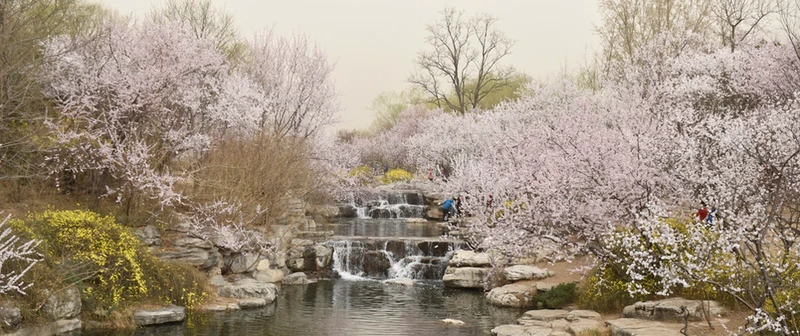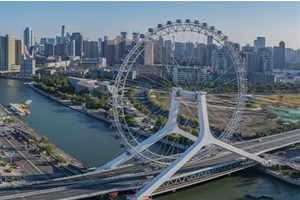Beijing Botanical Garden, located near the Sleeping Buddha Temple in Xishan Mountain, was established with the approval of the State Council in 1956, covering an area of 400 hectares. It is a comprehensive botanical garden with the functions of collecting, displaying and preserving plant resources, integrating scientific research, scientific popularization, sightseeing and leisure, plant germplasm resources protection and new and excellent plant development. Beijing Botanical Garden consists of a plant exhibition area, a scientific research area, a scenic spot and a nature reserve. More than 10,000 kinds of plants (including varieties) and 1.5 million plants are collected and displayed in the park.
Introduction to Beijing Botanical Garden:
The plant exhibition is divided into three parts: ornamental plant area, arboretum and greenhouse area. The ornamental plant area consists of special gardens, mainly including rose garden, peach garden, peony garden, peony garden, lilac garden, begonia garden, Mulan garden, Jixiu garden (bamboo garden), perennial flower garden and plum garden. The Rose Garden is the largest specialized rose garden in China at present, and nearly 1000 rose varieties have been cultivated. Peach Blossom Garden is a specialized garden with the largest variety of peach blossoms in the world. The "Beijing Peach Blossom Festival" held every spring attracts millions of visitors. The arboretum consists of ginkgo pine and cypress area, maple rose area, linden willow area, magnolia berberis area, sycamore oak area and paulownia ash area. Tropical plant exhibition greenhouse was rated as one of the top ten buildings in Beijing in the 1990s. The bonsai garden mainly displays the skills and works of various schools of bonsai in China.
The scenic spots and historical sites are composed of the reclining Buddha Temple, Cherry Valley, Cao Xueqin Memorial Hall, Liang Qichao's Tomb and Longjiao Temple Site. The reclining Buddha Temple, built in the Tang Dynasty, is a national key cultural relic protection unit with a bronze statue of Sakyamuni in the Yuan Dynasty. Cherry Valley, with dense forests, is an important nature conservation education area in the suburbs of Beijing. Cao Xueqin Memorial Hall shows Cao Xueqin's life and the scene of writing A Dream of Red Mansions in Xishan.
Best time to visit: spring, summer, autumn and winter.
Recommended tour duration: 4-5 hours.
Ticket price:
Big ticket:
Weekdays: Adult 5 yuan, student 2.5 yuan.
During the city flower show: adult 10 yuan, student 5 yuan;
During the Peach Blossom Festival: adult 10 yuan, student 5 yuan (during the May Day holiday, according to the usual fare);
Exhibition greenhouse adult: 50 yuan half-price ticket: 25 yuan;
Adult in the Reclining Buddha Temple: Half-price ticket for 5 yuan: 2.5 yuan;
Discount package adult: 50 yuan half-price ticket: 25 yuan;
Opening hours:
Opening hours (open all year round)
Botanical Garden 6: 00-19: 00 (summer) 7: 00-17: 00 (winter)
Big greenhouse 8: 30-16: 30 (summer) 8: 30-16: 00 (winter)
8: 30-16: 30 (summer) and 9: 00-16: 00 (winter) in the reclining Buddha Temple.
Cao Xueqin Memorial Hall
Closed every Monday, 8: 30-16: 30 (summer) and 9: 00-16: 00 (winter).
Details










